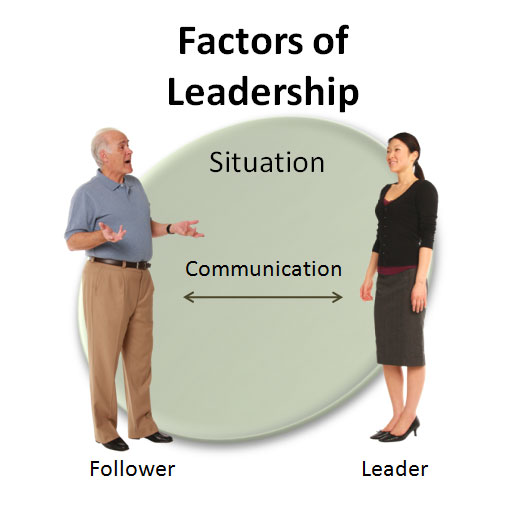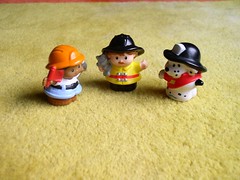The Art and Science of Leadership
 Welcome to the Art and Science of Leadership, a comprehensive collection of articles and activities for developing leadership skills and knowledge. Becoming a good leader is not easy, but by learning the correct leadership skills and knowledge, putting them into practice through quality learning activities, and then adapting them to different situations, will put you well on your way to becoming a leader.
Welcome to the Art and Science of Leadership, a comprehensive collection of articles and activities for developing leadership skills and knowledge. Becoming a good leader is not easy, but by learning the correct leadership skills and knowledge, putting them into practice through quality learning activities, and then adapting them to different situations, will put you well on your way to becoming a leader.
Leadership Manual
This guide is divided into five sections:
You can also use the Leadership Mind Map to select an article, or use the search bar at the top of the page.
For a list of learning activities that help to develop leadership skills, see the Leadership Development Outline.
Basics of Leadership
-
Concepts of Leadership: definition, principles, factors, processes, and difference from management
-
Leading: basic leadership skills, such as goal setting, supervision, and inspiring
-
Direction: planning with the Shewhart Cycle and problem solving
-
Leadership Models: The Four Framework Approach and the Managerial Grid
-
Human Behavior Part I: Hierarchy of Needs, Hygiene and Motivation Factors, and Theory X/Y
-
Human Behavior Part II: Expectancy Theory and ERG Theory
-
Motivation: allowing the needs of your team to coincide with the needs of your organization
-
Counseling and Performance Appraisals: helping employees to grow and develop in order to achieve organizational goals
-
Leadership Styles: the manner and approach of providing direction, implementing plans, and motivating people
-
Character and Traits of Good Leaders: being a person of honorable character
-
Ethos and Leadership: ethics for leaders
-
After Action Review: steps, guidelines, and strategies for capturing lessons learned
Click image for a larger diagram
Leadership Philosophies
-
Leadership Philosophies: The Continuum of Leadership Philosophies
-
Path-Goal Theory of Leadership: using a leadership style or behavior that best fits the employee and work environment in order to achieve goals
-
Transformational Leadership: changing the basic political and cultural systems to grow an organization
-
Social Leadership: using social interactions and social media to create great teams
-
Authentic Leadership and Social Influence: being consistent with a your personality and core values, and that is honest, ethical, and practical
-
Servant Leadership: sharing power, putting the needs of others first, and helping people develop and perform as highly as possible
Team Leadership
-
Growing A Team: becoming a team leader
-
Matrix Teams: creating a cross-functional teams to accomplish more through the use of knowledge and skill sharing
-
Team Leadership Model: a framework for diagnosing team problems and take appropriate action to solve team challenges
Advanced Leadership Skills
-
Horizontal Leadership: Flattening the Organization: moving beyond hierarchical or vertical leadership for an agile organization
-
The Four Pillars of an Organization: Leadership, Management, Command, and Control
-
Organizational Behavior: elements and models of organization behavior and development
-
Diversity and Inclusion: creating an atmosphere in which all people feel valued, respected, and have the same opportunities as others
-
Diversity Continuum: Equal Employment Opportunity is the law, while diversity is more of a mindset
-
Change: reshaping the organization to meet a rapidly changing world.
-
Learning Organization: the level of performance and improvement needed in today's ever-changing environment requires full-time learning
-
Mentoring: types of mentoring, finding a mentor, and creating a mentorship program
-
Visioning: moving the organization forward by looking towards the future
-
Sensemaking: the social nature and complexities of visualization
-
Strategy and Tactics: strategies are forward-looking, while tactics are more or less present or now-orientated
-
OODA Loop: decision making cycle of observing, orienting, deciding, and acting
Supporting Skills
-
Time Management: nothing can be substituted for time, once wasted, it can never be regained
-
Meetings: creating memorable meetings by preparing, conducting, and following-up
-
Communication: the exchange and flow of information and ideas from one person to another
-
Presentations: how to communicate ideas and information to a group
There is no such thing as a perfect leader, either in the past or present, in China or elsewhere. If there is one, he is only pretending, like a pig inverting spring onions into his nose in an effort to look like an elephant. - Liu Shao-Chi
Lesson Learned—we must consistently strive to improve ourselves.
Learning Activities
The Leadership Development Outline contains the above leadership guide, plus a variety of developmental tools, such as surveys, case studies, and reflective activities for each chapter.

Let's work together to solve this. . .
Leadership Development Model
Related Pages
While not part of the leadership section, these pages should be of interest to those studying leadership:
“The very essence of leadership is that you have to have a vision. It's got to be a vision you articulate clearly and forcefully on every occasion.” — Theodore Hesburgh, President of the University of Notre Dame

